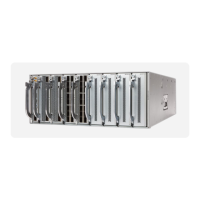172
Cisco Nexus 5600 Series NX-OS Multicast Routing Command Reference
OL-31626-01
Chapter I Commands
ip igmp static-oif
ip igmp static-oif
To statically bind a multicast group to the outgoing interface (OIF), which is handled by the device
hardware, use the ip igmp static-oif command. To remove a static group, use the no form of this
command.
ip igmp static-oif {group [source source] | route-map policy-name}
no ip igmp static-oif {group [source source] | route-map policy-name}
Syntax Description
Command Default None
Command Modes Interface configuration mode
Supported User Roles network-admin
vdc-admin
Command History
Usage Guidelines Before you use this command, make sure that you enable Protocol Independent Multicast (PIM) on the
interface by using the ip pim sparse-mode command.
This command does not require a license.
Examples This example shows how to statically bind a group to the OIF:
switch(config)# interface ethernet 2/2
switch(config-if)# no switchport
switch(config-if)# ip igmp static-oif 230.0.0.0
switch(config-if)#
This example shows how to remove a static binding from the OIF:
switch(config)# interface ethernet 2/2
group Multicast group IPv4 address. If you specify only the group address, the (*, G) state
is created.
source source (Optional) Configures the source IP address for IGMPv3 and creates the (S, G) state.
Note A source tree is built for the (S, G) state only if you enable IGMPv3.
route-map
policy-name
Specifies the route-map policy name that defines the group prefixes where this
feature is applied. The route map name can be a maximum of 63 alphanumeric
characters.
Release Modification
6.0(2)N1(1) This command was introduced.

